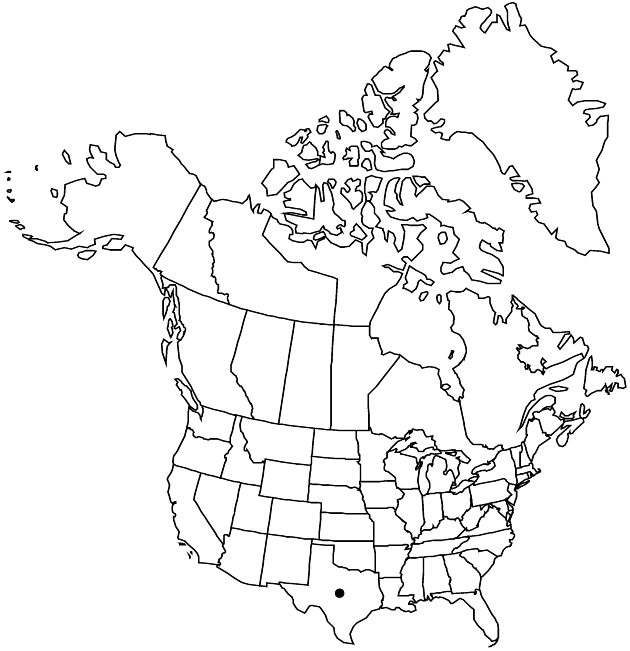Chaetopappa bellioides
Wrightia 1: 77. 1946.
Annuals, 1–3 cm, eglandular; usually taprooted, rarely producing slender caudex branches when buried. Leaves not densely overlapping, basal blades oblanceolate-spatulate, cauline mostly oblanceolate to narrowly oblanceolate, 5–20(–30) × 2–5 mm, herbaceous, bases not clasping, flat, faces strigose. Involucres hemispheric, 3.5–6 × 4–10 mm. Ray florets 10–20(–32); corollas white. Disc florets 33–106, bisexual. Cypselae 1.8–2.1 mm, 2(–3)-nerved, faces sparsely strigose; pappi in 2 series, outer of (4–)5(–8) broad, white, hyaline scales 1–1.5 mm plus alternating inner of (4–)5(–8), barbellate bristles 2.1–3 mm. 2n = 16, 32.
Phenology: Flowering May(–Sep, –Nov).
Habitat: Limestone outcrops and roadcuts, juniper and oak woodlands
Elevation: 100–900 m
Distribution

Tex., Mexico (Aguascalientes, Chihuahua, Coahuila, Durango, Nuevo León, San Luis Potosí, Tamaulipas, Zacatecas).
Discussion
Chaetopappa bellioides is distinct in growth habit: numerous ascending stems usually arise from the apex of the caudex and form a bowl-like shape. Branches in other Chaetopappa species mostly arise above the base of the stem.
Selected References
None.